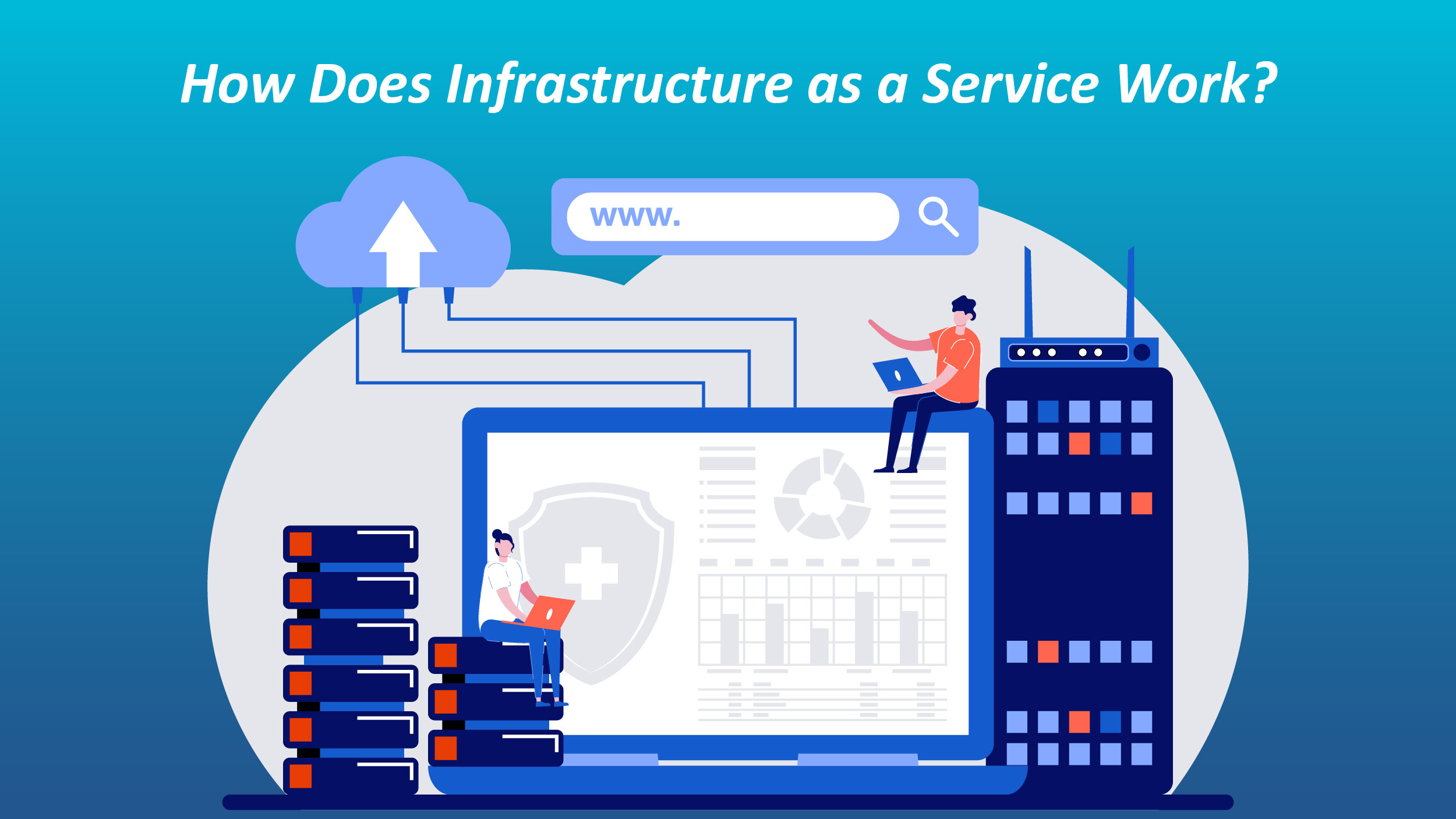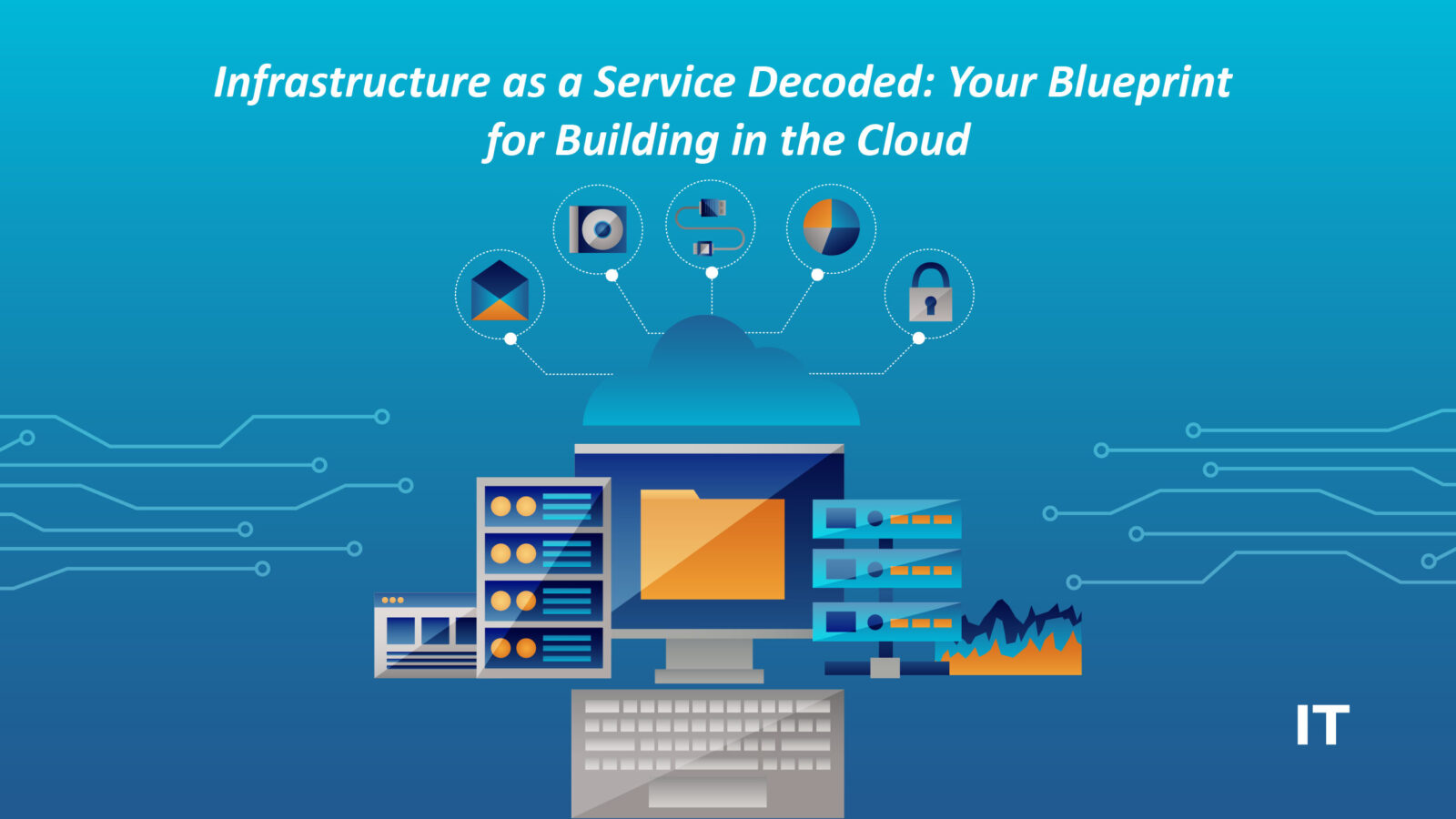Cloud computing is the technological frontier where servers become ethereal, and computing power is as limitless as your imagination. In the dazzling cosmos of cloud computing, one star shines particularly bright – infrastructure as a service (IaaS). Picture a world where your digital infrastructure is not confined by physical constraints but floats gracefully in the virtual heavens, ready to be harnessed at your command.
Let’s talk more about this technological innovation in this ultimate guide.
What is Infrastructure as a Service?
A cloud computing service model known as infrastructure as a service (IaaS) allows computing resources to be hosted in public, private, or hybrid clouds. Companies can move all or part of their collocated or on-premises data center infrastructure to the cloud, where it is owned and operated by a cloud provider, by using the IaaS model. These reasonably priced infrastructure components might be software and other components as well as hardware for networking, storage, and computation.
How Does Infrastructure as a Service Work?
 In an ordinary infrastructure as a service (IaaS) framework, businesses, regardless of their size, use cloud provider services such as computing, storage, and databases. These services are made available to businesses by hosting the necessary hardware and software in the cloud. Consequently, businesses are relieved of the burden of buying and maintaining their own equipment or physical space to house it. Moreover, the cost structure shifts towards a pay-as-you-go model, allowing businesses to pay only for the resources they require. Additionally, businesses can easily scale up their computing resources and incorporate new technologies in a matter of minutes as they expand.
In an ordinary infrastructure as a service (IaaS) framework, businesses, regardless of their size, use cloud provider services such as computing, storage, and databases. These services are made available to businesses by hosting the necessary hardware and software in the cloud. Consequently, businesses are relieved of the burden of buying and maintaining their own equipment or physical space to house it. Moreover, the cost structure shifts towards a pay-as-you-go model, allowing businesses to pay only for the resources they require. Additionally, businesses can easily scale up their computing resources and incorporate new technologies in a matter of minutes as they expand.
Also Read: A Beginner’s Guide to Hybrid Cloud in 2023
In a conventional on-site scenario, a company is responsible for the management and upkeep of its own data center. The company is required to make investments in servers, storage, software, and other technological infrastructure, as well as hire an IT team or contractors to handle the procurement, administration, and upgrades of all the equipment and licenses. The data center needs to be constructed in such a way that it can handle the highest level of demand, despite the fact that at times workloads decrease and these resources go unused. Conversely, if the company experiences rapid growth, the IT department may face challenges in keeping up with the increased demands.
Infrastructure as a Service Unwrapped: The Bright Side
 So, IaaS has a bunch of perks for businesses. Let’s dive into some of them:
So, IaaS has a bunch of perks for businesses. Let’s dive into some of them:
Cost Savings
With IaaS, you are charged only for the specific infrastructure resources that you utilize. This flexible approach enables you to easily adjust your resource allocation according to your requirements. Unlike traditional methods, there is no need for substantial upfront investments in costly hardware, and ongoing maintenance expenses are also reduced to a minimum level.
Flexibility
Infrastructure as a service offers a great level of versatility and scalability, enabling you to easily adjust to changes without being bound to long-term hardware commitments. It grants you the freedom to select from a variety of infrastructure choices that best align with your specific requirements.
Faster Deployment
Deploying new applications and services using IaaS is typically more efficient and faster compared to traditional on-premises infrastructure.
High Availability
IaaS simplifies the process of designing resilient infrastructure solutions. By distributing resources across various data centers and availability zones, it guarantees optimal uptime and uninterrupted business performance, even during outages.
Security
Reputable IaaS providers offer strong security measures and management solutions to protect infrastructure resources. These measures include features like identity and access management, encryption, security monitoring, vulnerability scanning, and compliance auditing tools. Many organizations find that the security provided by IaaS surpasses their own capabilities.
Infrastructure as a Service Examples
In the fast-paced world of cloud computing, businesses are increasingly turning to IaaS to fuel their digital ambitions. One standout player in this arena is the Google Cloud Infrastructure as a Service, offering a robust foundation for organizations to build, scale, and innovate without the hassles of managing physical hardware.
Lots of companies out there offer IaaS solutions, and they all bring something special to the table. Now, let’s check out some popular IaaS providers.
- AWS provides various storage services like Simple Storage Service (S3) and Glacier, along with compute services such as Elastic Compute Cloud (EC2) for a wide range of applications and computing needs.
- Google Cloud Platform, also known as GCP, provides storage and computing services via its offering called Google Compute Engine.
- Microsoft Azure Virtual Machines provides cloud virtualization services catering to various purposes in the realm of cloud computing.
Practical Uses of Infrastructure as a Service (IaaS)
- Disaster Recovery (DR) – Scalability, diversification, and consolidation of on-premises resources are some advantages of virtualized disaster recovery.
- Testing and development – IaaS is widely used by developers to create and deploy web apps and software as a service.
- Big data – To handle structured and unstructured data effectively, you need scalable computing power, disk space, and network bandwidth. It’s ideal to aggregate data from various sources in a centralized location, like the cloud.
- Add-on services – Scalable computing capacity, disk space, and network bandwidth are essential for the storage, management, and analysis of both structured and unstructured data. It is also advisable to consolidate diverse data sources in a centralized location, such as the cloud.
Closing Remarks
In the ever-evolving landscape of technology, cloud infrastructure as a service emerges not just as a solution but as a catalyst for business growth and agility. By now, it is evident that the power to scale, the flexibility to adapt, and the efficiency to optimize resources lie at the heart of this cloud computing model. Embracing IaaS represents more than a technological shift; it signifies a strategic move towards a future where businesses can thrive in the face of evolving demands. The road ahead promises continued advancements, and with infrastructure as a service leading the charge, organizations are poised to harness the full potential of cloud-based innovation.

































